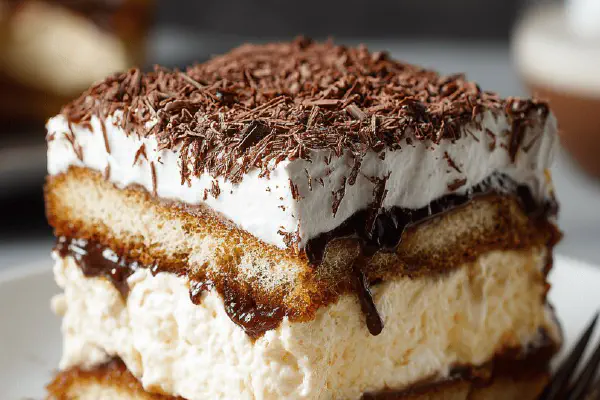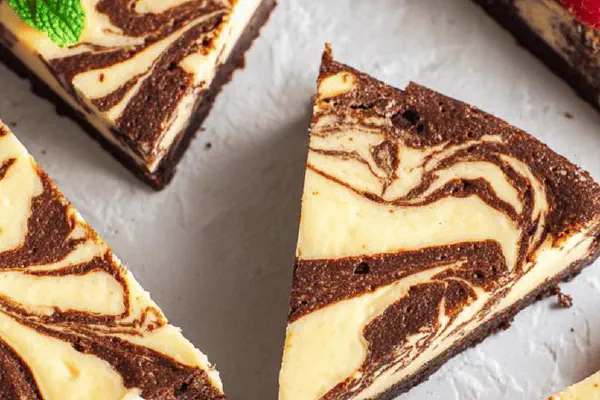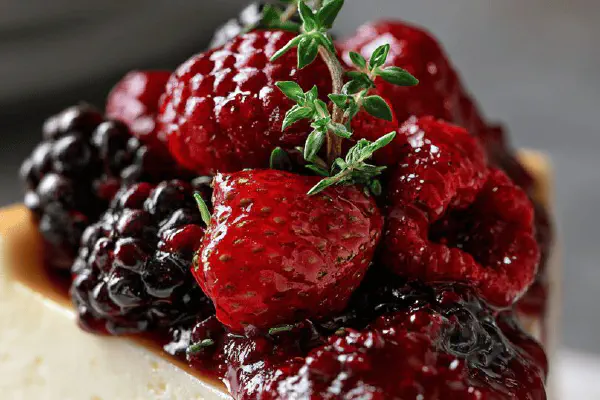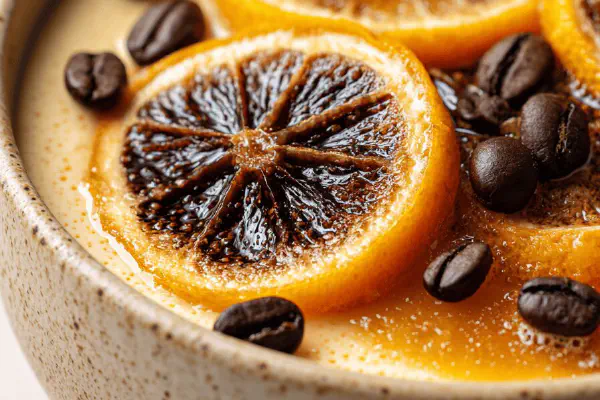Ricotta Coffee Tiramisu
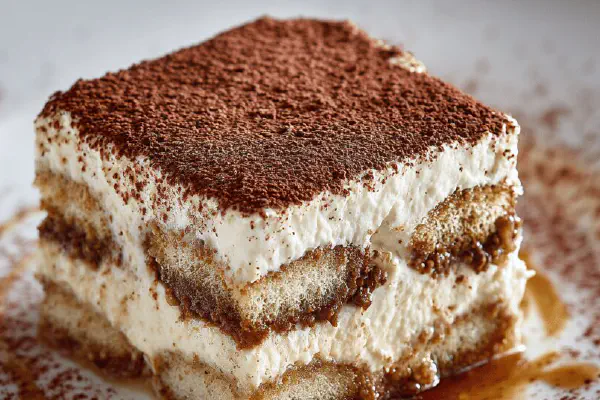
E
By Emma
Certified Culinary Professional
•
Recipe tested & approved
Tiramisu reinvented without mascarpone. Ricotta and cream cheese blend creates a lighter, tangier filling. Espresso deepens flavor, liqueur swapped for amaretto to add a nutty note. Egg whites whipped to peaks folded in for airy lift. Ladyfingers soaked quickly—avoid soggy disaster. Cocoa dust finish. Chilling slows flavor melding, texture firms just right. A twist on the classic, adapted for accessibility and texture play.
Prep:
30 min
Cook:
20 min
Total:
50 min
Servings:
8 servings
#Italian-inspired
#dessert
#coffee
#ricotta
#amaretto
#light texture
Lose the mascarpone. Found ricotta and sour cream give an intriguingly brighter, lighter profile to the classic tiramisu. Switched liqueur from coffee to amaretto—introduces unexpected nutty warmth. Experimented with egg whites instead of yolks or whole eggs for less density, more lift and air. Ladylike fingers soak short, flirt with espresso but never drown. Texture matters more than patience here. Cocoa sprinkles last-minute, adding just the bitter kiss needed post-refrigeration. This version breathes different life. Keeps classic traits, but less heavy, less predictable. Some learnings along the way—don’t skip chilling or risk loose layers. Don’t over-soak the biscuits or face crumb mush. Worth every step for something familiar yet fresh, a bit bolder on the back palate.
Ingredients
- 240 ml brewed espresso strong and hot
- 150 ml sugar divided
- 450 g whole milk ricotta
- 125 ml light sour cream room temperature
- 30 ml amaretto liqueur
- 3 egg whites
- 14 ladyfinger biscuits
- 15 ml cocoa powder sifted
About the ingredients
Ricotta replaces mascarpone for accessibility and flavor brightness; it’s less fatty but tangier, so sour cream adds smoothness while keeping the mixture creamy yet airy. Amaretto liqueur swaps the coffee liqueur, enhancing with almond nuances without overpowering. Egg whites, not yolks, is intentional for lighter texture and reduced richness. Ladyfingers must be fresh; stale ones absorb espresso too aggressively and turn gummy. Use freshly brewed strong espresso with no sugar, so you can control the sweetness; sugar splits between soaking liquid and meringue for balanced sweetness and structure. Cocoa powder dusting last; adding early can cause moisture to seep in and bitterness to deepen uncomfortably.
Method
- 1. Brew espresso; stir in 20 ml sugar while hot. Let cool in the fridge to just cold—sharp, bitter aroma shifts to smooth with a hint of sweetness. Keep close, moisture matters.
- 2. Whisk ricotta and sour cream with amaretto until velvety, no lumps. This combo beats mascarpone for tang and lightness. Use a hand mixer low speed to avoid overmashing. Set aside.
- 3. Clean, dry bowl. Whip egg whites on medium speed until soft peaks form—tips gently curl. Add remaining 130 ml sugar gradually while whipping to stiff shiny peaks. Tip: overwhip and it dries out, making mixing tough.
- 4. Fold whites gently into cheese mix—use spatula, slow, big motions. Preserves volume, no deflating. Uneven mixing ruins airy texture. Check consistency: light, almost fluffy but stable.
- 5. Dip ladyfingers quick—1 sec max per side, sogginess kills the dessert. Lay half in a 3-liter glass dish. Layer half cream mixture evenly, smoothing with spatula but don’t press down hard.
- 6. Repeat with remaining soaked ladyfingers and cheese cream. Tap dish gently to even out layers and release air bubbles.
- 7. Sift cocoa powder on top with fine mesh—go light, too heavy turns bitter. Cover tightly, refrigerate minimum 2.5 hours—overnight better. Texture firms, flavors marry gradually but no drowning in moisture.
- 8. Before serving, let sit 10 minutes room temp. Aroma wakes up, texture softens slightly, easier to slice. Serve with a long spoon or fork—fork pokes textures well.
Cooking tips
Espresso must cool completely—hot liquid wilts ladyfingers too fast and melts the cheese blend. Separating sugar for soaking and meringue stabilizes the final texture, preventing weeping or overly sweet cream. Whip whites until shiny and stiff but not dry; dry whites fold poorly and cause clumps. Folding technique critical: slow, sweeping motions preserve air pockets, which create the dreamy structure. Ladyfingers dip fast—like fleeting kisses—and layering must happen quickly to keep biscuits intact and avoid soggy disaster. Let the assembled dish rest cold for at least 2.5 hours, preferably overnight, so flavors meld and texture sets; impatience leads to runny, weak flavor melds. Let tiramisu warm slightly before serving for best mouthfeel and aromatic release.
Chef's notes
- 💡 Espresso must cool fully before dipping. Hot coffee melts cheese mix, turning texture runny. Watch steam fade—cool means flavors soften and ladyfingers stay intact; soak quickly, less than two seconds per side or risk gummy base.
- 💡 Separate sugar amounts: part for soaking, part for meringue. Keeps sweetness balanced, texture stable. Whip egg whites until shiny stiff peaks but not dry. Dry whites crumble, mix poorly, create lumps in final cream.
- 💡 Fold whites gently into ricotta-sour cream base. Slow sweeping motions preserve bubbles. Too much force deflates mix; results dense and flat. Final texture should feel light, almost fluffy yet hold shape when scooped.
- 💡 Use freshest ladyfingers. Stale biscuits absorb espresso aggressively, become gummy and flatten layers. Espresso strong and unsweetened allows sugar control; adjust sweetness by splitting sugar carefully between soak and meringue to keep structure.
- 💡 Chill dish minimum 2.5 hours, overnight ideal. Let flavors meld slowly. Texture firms up, layers hold. Remove 10 minutes before serving. Slight warming wakes aroma, softens edges, easier to slice. Cutting cold may crack delicate layers.
Common questions
Can I use mascarpone instead of ricotta?
Yes, but ricotta gives lighter, tangier profile. Mascarpone richer, denser. Mixing speed must slow to avoid overbeating mascarpone. Texture and flavor shifts noticeably.
How to fix soggy ladyfingers?
Soak time too long. Dip rapid, one second max each side. If soaking liquid cools, ladyfingers drink slower; if hot, they dissolve fast. Layer fast to keep texture crisp-ish.
Why fold egg whites instead of mixing?
Folding preserves air pockets. Stirring knocks out volume, making dense cream. Airiness key for lightness. Overwhip dry whites fold poorly; balance stiff but soft shine.
Storage tips after assembly?
Cover tightly. Fridge 2+ hours minimum, better overnight. Can freeze but texture shifts, cocoa powder dampens. If freezing, thaw in fridge slowly; expect softer cream, less defined layers.
